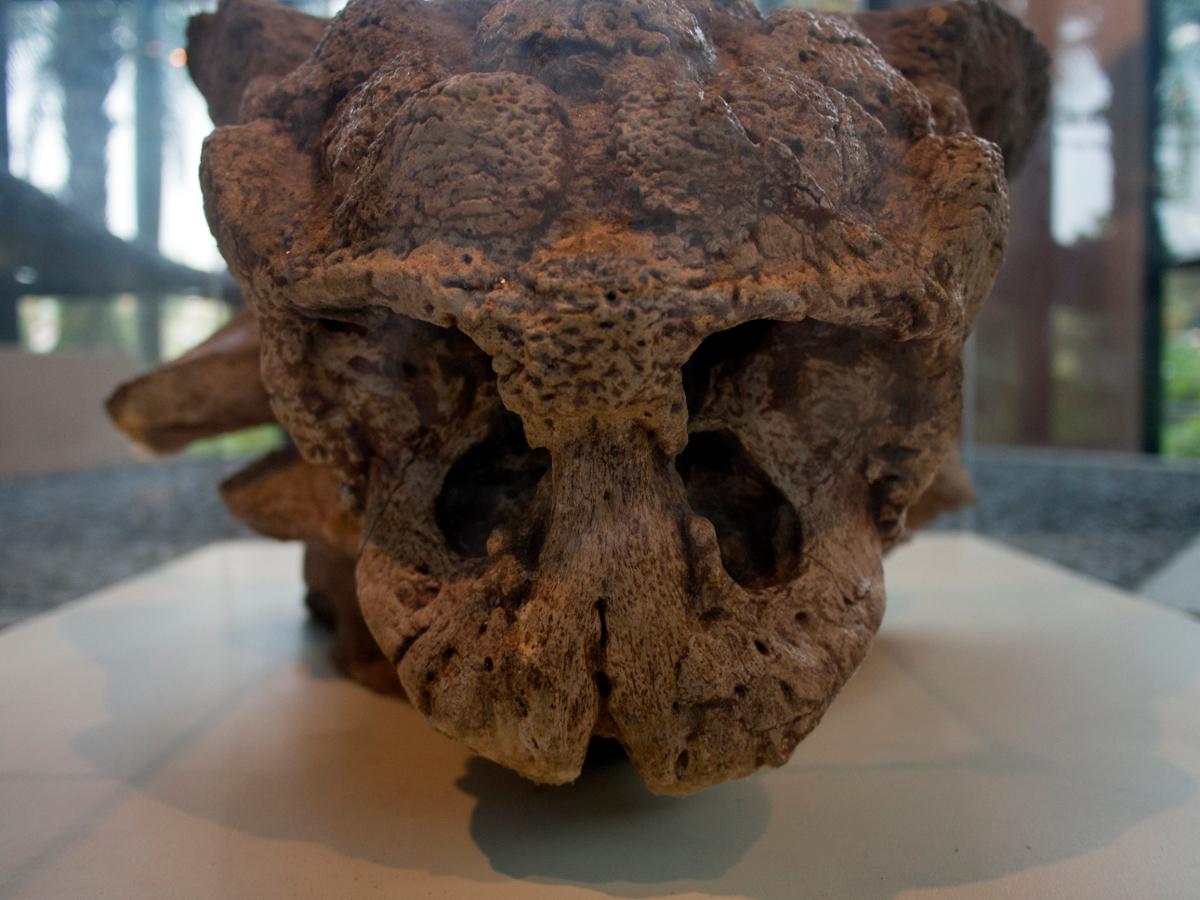Y: Why are we looking at this dinosaur skeleton, Don?
D: Well, Yaël, I wanted to take a close look at this ankylosaurs’ snout. When it was alive, it had some crazy nasal passages coiled up in there.
Y: What do you mean, “crazy nasal passages”?
D: I mean they looked like those “crazy straws” for kids—you know, the colorful ones with all those complicated loops.
Y: So what’s a dinosaur doing with a crazy straw in its nose?
D: That’s what scientists wanted to find out. To do that, they did some CT scans of fossils from two different ankylosaur species, and computer simulations that model how gases or fluids flow. They found that those unusually long and convoluted nasal passages were key to helping the dinosaurs survive the warm temperatures of the Mesozoic by functioning something like an air-conditioner for the dinosaurs’ brains. Large bodies are prone to overheating because they retain heat even after the air outside cools down. That can be a problem, especially if hot blood from their body’s core reached their brain. Their long nasal passages helped prevent that. Scientists found that blood vessels taking blood to the brain ran right next to the nasal passages. When ankylosaurs took a breath, the hot blood in these blood vessels warmed up the cooler inhaled air, while the inhaled air cooled down the hot blood before it reached the brain.
Y: So the convoluted nasal passages made heat exchange between the blood vessels and nasal passages even more efficient.
D: Right. Their bodies looked like they were encased in armor, but their brains needed that heat exchange for a little extra protection.










